| Umělec 2007/2 >> We are your future | Просмотр всех номеров | ||||||||||||
|
|||||||||||||
We are your futureUmělec 2007/201.02.2007 Alena Boika | report | en cs de es |
|||||||||||||
|
This decisive statement was issued just prior to the opening of the Second Moscow Biennale (March 1 – April 1, 2007) by a group of Latin American and Chinese artists presented by curators Ethan Cohen and Juan Puntes. The other Biennale projects had been known long before; but this one, with its name and participants, seemed something of a sensation for anyone following news of Moscow’s “big project”- a presentation that really proved to be “big.” Indeed, this striving in Russia- mainly in Moscow- for everything to be huge is so endearing. It’s quite childish and ever alive in all its beauty. It is a youthful gigantomania, endemic to large developing countries whose past is glorious and future doubtful.
IN PLACE OF A FOREWORD This contemporary art show’s central project was located within the partially-built Federation Towers, a development project promising to include a 354 meter tower with a spire aspiring to 448 meters —the tallest tower in Europe. An elevator affixed to the exterior of the half-finished skyscraper lifted guests and participants, frozen with delight and fright, up to the 18th floor. Part of the exposition occupied the 18th to 20th floors. (‘The Eternal dream of humankind is just about to come true as the yawning heights already come into the picture.1) Small men from various Asian republics stirred somewhere underfoot. Such workers have been rebuilding Moscow for the past few years. Even so, Muscovites are ungrateful, and to them these people are achi, black, without distinction. Recently, I learned, a law prohibiting the employment of foreigners in Moscow was adopted. So far, it only concerns store employees, but its further revision and development is not far off. A young and tender woman, listening to my concerns about who would then build and clean the city if all these people were shipped back home as she’d prefer, retorted, “I wish Stalin were here. In one fell swoop, he’d swipe them from the face of the earth. Then everything would be so much cleaner and there’d be no need to clean anymore.” With that in mind, I’d like to discuss a couple of things that were impressive in Moscow: one is this We Are Your Future project. I draw a parallel between it and another curated show at the Biennale called I Believe, a no less pretentious presentation that inspired quite a few discussions with contradictory conclusions. In addition to that, I’d like to introduce a discussion about what can be conditionally labeled a new Moscow architecture, or, better, those unique processes that are taking place in Moscow and affect everything and, of course, are readily apparent in both art and architecture. WE ARE YOUR FUTURE. AND WE ARE YOURS Any project carrying a name like that is going to be very important today, as it finds itself consistent with mainstream Moscow opinions, where the growth of everything—the population’s well-being thanks to migrants of every hue, the number of big black and other cars, the environmental pollution of all kinds, traffic jams that turn roads into sunny immobile automotive steel glaciers, the mystical manifestation of strange and megalithic architectural structures—has acquired an improbable speed exceeding human dimension. There are not many in the capital who think that there could be some other Russia beyond Moscow. Well, OK, maybe St. Petersburg, plus one or two other cities. Against this background, the future looks beautiful as the entire city dances to the euphoric triumphal throb of a cocaine-induced rhythm. Sometimes it seems that Moscow is itself an original futuristic project, a realized Utopia that develops and transforms non-stop, modifying according to substituted ideologies. With that in mind, the statement, “We are your future,” is one that a dozen Russian artists would be happy to sign— not to mention others who have always been ready to sign anything. ALL TO THE WINERY The exhibition opened in the new Winzavod Contemporary Art Center as part of the Biennale. A red-brick disused winery, the Winzavod itself deserves a separate digression. Today, it is the largest art space in Moscow, a peculiar geographic center for contemporary art, towards which all of the city’s significant galleries have begun moving. This post-industrial space was rapidly yet skillfully modified, becoming immediately alluring to many well-established galleries and associated institutions. Without evaluating the virtue of such centralization, one can appreciate that such a peculiar art-town is a new and positive phenomenon. How can the thirst of Moscow galleries for the Winzavod space be explained? The place has not been fully developed- though not far from the center, it is hard to get to, even for Moscow residents. Overcrowding undoubtedly allows for a healthy competition. In any case, the appearance of such a district— a Moscow Chelsea—is rather amusing, welcome and subject to cultivation and research. One wonders at all the ways it might turn out in five years, considering the rapid growth of the Russian economy and the space in combination with the political and social situation in Russia in general. The We Are Your Future press release proudly proclaimed that “50 Works by 33 Artists”, brought to Winzavod as part of the show, would ensure “radical changes in the geography of the world art scene.” As we well know, Mexico, Peking and Havana have only recently appeared on the map. We don’t yet know what else will emerge as a result of Winzavod. For the time being, one of its most gigantic products- in both conception and scale- is the exposition entitled I Believe, a dubious project initiated by Oleg Kulik, a former artist turned media guru who has, as curator Elena Selina precisely remarked, become “the face of contemporary Russian art.” I DON’T BELIEVE The press release also informs that the We Are Your Future project is a proposal by Latin American and Chinese artists to reassess the nature of borders, to stop copying European models and to start exploring their own. Hence, the I Believe project could be regarded as a response to the statements of their Chinese and Latin-American colleagues. I will refrain from making banal comments about some search for a new Russian spirituality. It is sufficient to note the allure of their appeal: “Wipe the dust off our ideals! Contemporary art has long been seen for its radical exploration of meaning. But that is a position of the past. The time has come to consider the individual and the universal beyond any current philosophical fashion, but with an eye towards new ways to appreciate life in all its manifestations.” In this context, one pronouncement by Oleg Kulik is awesome. He described the show as a “project of artistic optimism,” a challenge for artists to resonate with anything they believe in. Rather than plunge into the show’s dangerous depths, I’ll present a possible parallel between We Are Your Future and I Believe, and note some common features and differences. I Believe was created as a big show, or a parade of 59 shows (59 participants), where every visitor could find something to his liking. I regarded it as a flirtation with the audience and a popularization of contemporary art. The exhibition presented itself in a very alluring way: “come on in, don’t be afraid of this strange contemporary art; it can also be amusing, not always clear but not so dull either. You can touch everything, snoop all over the place and, at the same time, be inspired by sacred, artistic and religious things.” ABOUT TANIA, ANIMALS AND PROFOUND IDEAS By contrast, We Are Your Future did not seek to entice anybody, and didn’t call forth any inspiration about anything. Like a strong, stoic Chinese face, the show’s features were infused with layers of meaning. But even in that, there was room for a bit of a side-show: Shifting from one foot to the other in front of an unassuming door, through which bloodcurdlingly odd sounds could be heard from time to time, was the artist Tania Bruguera. Visitors gazed into her eyes trying to believe that there was nothing fearful behind the door. There – in that little Room of Confidence with dim light – a daring visitor entered, and got into some real madness. Ordinary Russian guys with kind faces plopped a monkey (or two) into his arms, chimpanzees wearing pink and blue suits: a boy and a girl. The guys then put an owl and a falcon on his shoulders, and if any time remained before the visitor fainted (due to extreme happiness from such communion with nature), they offered him yet one more representative from the wild kingdom. Then – Attention. Smile. Cheese! They flashed a photo of that visitor against the framed black-and-white background portrait of a man with a reserved grin, who looked suspiciously like Felix Edmundovich Dzerzhinsky. The chamber was humid and stank like a zoo—a mini-circus for anyone unable to spend time in a real one. I considered it to be an allegory of family life, a sort of class for a young soldier-in-training. But Tania explained it differently. She said that she did not know what the result of this project would be; it’s just a delight to provoke people to peep into a hole in the door, through which they could not see anything, and then to surprise them. I agree with her - out of all the Latin American and Chinese artists, Tania’s project was the one I liked most. Besides, she said she would not have had any opportunity to learn what people thought about for her second work, a more serious one, so contacting those who visited her “workshop,” as she called it, was especially interesting. Her second work was also indirectly connected with fauna, however this time the allegory was different. Bruguera’s work The Burden of Guilt is the documentation of a performance implemented from 1997 to 1999. The photo shows the artist wearing a cow skeleton with scraps of meat that she keeps eating. Human civilization, with its inhuman speed of development, has generated or, rather, formed, a new type of person, whom one could call Homo All-absorbing, a dynamic animal aimed at consumption, who does not distinguish Schubert, Dali or Russian icons from universal fast-food, a major by-product of globalization. From the performance’s history and details, visitors learn that this is an allusion to suicides committed by Cubans during the Spanish invasion. On May 4, 1997, Bruguera stood in old Havana in front of a Cuban flag—one she wove from human hair—wearing the chopped-up remains of a slaughtered sheep on her neck, Tania mixed soil and water that she proceeded to eat over a 45 minute period. She explained that many Cubans fell dead right before the eyes of Spanish conquistadors after eating a lot of soil. As long as I’m on subject of animals, I can’t help but think about the I Believe project as one created by a dog-man. Oleg Kulik has done a lot to ensure that such a definition sticks with him. Here he goes again, trying his best to change that image. Long ago, he flirted with faith, messianism and the role of guru. In his controversial project represented during Moscow’s 1st Biennale, hens defecated on the head of the great Russian writer Leo Tolstoy thus turning Leo Nikolaevich along with all his ideas into an incessantly changing work of art with a clear message of negation to all those who say “Beauty will save the world!” and various others. This time, Kulik has turned in a different direction. It is very interesting to observe how a person, once an outstanding artist, can try out such divergent models. How many people can start out as a human-dog and end up as a super-human guru? Perhaps this can be explained as a confrontation with the cultural repression in which every artist, independently of his role, may be radically expressive and equally convincing. ABOUT PORNOGRAPHY AND THE PRESENCE OF ABSENCE As long as we’re on the subject of dogs, I’d like to mention a project that I missed during the opening. Its full title is The Dog Barks, but it Makes no Difference to the Camel, by Columbian artist Oswaldo Macia, who lives in London. According to the initial version of the story, Dog and a Camel had been held up by Russian customs. At the height of the opening, fearful rumors spread amongst the excited masses: Russian customs officials, extremely fierce, politicized, and trained as censors, had apparently “arrested” the work for one political motive or another, and wanted to protect the masses from its depravity. That was convincing; hearts clenched in general anxiety, and eyebrows knitted furiously. In fact, the whole situation was much more prosaic. The circumstances with customs concerned an entirely different work, Monoteistas (2007) by Jose Castro, which could have been censored as pornography, if only customs officials had wanted to unpack it. As it turns out, Monoteistas had been shipped using a very slow company, and the customs papers were incorrect. Bureaucracy is undoubtedly awful, but, not equal to political censorship. With Monoteistas’ problem explained as a bureaucratic “snafu,” the question of censorship would seem to be laid to rest. So why is it that Dog and a Camel was never shown? Curator Juan Puntes was very upset as the work was especially important for the show; besides, he had invited its creator, Oswaldo Macia, to Moscow. The reason turned out to be only technical – the photo had been printed, but it was impossible to find sound equipment in accordance with the artist’s requirements. Finally, the equipment was found, but at a fabulous price. To this came the unexpected demand of a $2,000 per day payment— $16,000 for 8 days—for keeping custody of 23 works at the Russian customs, an embarrassment even before the Russian bureaucracy was added. As a result, viewers could only admire the work in the catalogue and imagine its audio part: two hundred barking dogs, whose sounds were supposed to spread in some peculiar way. The catalogue explained that the title’s thoughtful phrase, “The dog barks, but it makes no difference to the camel – we are dogs, and the world is a camel,” is a proverb coming from Darfur, a military conflict zone in western Sudan. The photo is a light-box portrait, front and profile, of the smart and indifferent face of a camel. The work, as noted, is equipped with sound. Juan Puntes’ comments make it clear that the absence of this work is indirectly connected with the Russian customs. So, let’s return to the work of Jose Castro—the one that really was held up by Russian customs. Monoteistas features a photograph of a naked man with golden books chained to his penis. A sensation of pain strikes any viewer at the sight of the suffering penis apparently about to be ripped off; the books seem secondary. Knowledge, combined with gold reserves, can deprive man of his erection and vitality, anchoring him to all of civilization’s achievements. Juan Puntes described three open books in barred boxes: the Bible in Russian, the Torah in Hebrew, and the Koran in Arabic. The curator added that the Bible and the Torah were stolen twice during the exhibition, despite the presence of guards, but nobody ever touched the Koran. A more provocative work, one with explicitly sexual content, was that of Mexican artist Carlos Amorales. Entitled, Turbulencias 1 (2003), the work is a silhouette of a woman echoing the 19th European stencil tradition; she lies resplendent on her back elegant in high-heels as a jet plane darts deep between her legs. This is an all-in-one refined combination of political correctness and feminism with the so-called war on terrorism. I tried to find some sexual parallel in I Believe, and failed. Perhaps this is because there is no room for pornography in the realm of faith. It is a pity – nobody wants to believe in unshakable categories. The live-art Alexander Petrelli (The Coat Gallery), wearing nothing but a fig leaf and with “I am man” scrawled on his chest, doesn’t count. A girl in a subway uniform standing in front of a projection featuring a subway pulling into a station (a project by Sergey Denisov and Ivan Kolesnikov+ Andrey Kotov Second Heaven Station (2007) was regarded by visitors as a much more sublime sexual message than Petrelli streaking around at the opening. Of course, these artists hadn’t considered that the cliché of a “girl in uniform” (nurses, stewardesses or firewomen, according to your individual needs) bears an a priori sexual implication. You cannot stop the pink tank of pop-culture; that certainly was a counterpoint of I Believe as concerns any sexual message. I could say something similar about the works by the AES+F Group and Arsen Savadov, but that would be indecent— it’s just too trite. Back to We Are Your Future, and especially significant in its Russian setting for its discussion of the past was a work by Marcos Ramirez Erre. He placed a billboard as a road sign near Moscow’s Kursk train station that showed the distance between Moscow and towns once occupied by Soviet and Russian armies—including Prague, Berlin and Grozny. After only eleven hours on display, the very organizers, who had initially contracted the work for the month-long biennial, demanded that it be taken down. The curators had to take the billboard to Winzavod; in protest they created an additional work for the interior of the railroad station featuring a discussion about censorship in democratic Russia. A work by Teresa Margolles (Mexico) was also relevant in the Moscow environment, filled with shining luxury and “two meter jeweled beauties8” as Alice Nikitinova described it. It is amusing that for the catalogue, Margolles presented her work made of garbage, but at the Biennale, she presented instead a golden jewel with 600 pieces of glass (Joya, Culiacan). As Juan Puntes described, it is a fantastic piece of jewellery made of broken glass from military vehicles that had been fired upon by narco-traffickers in Sinola, on the US-Mexican border. The glass shards were set into plates of pure gold created for the Narco bosses as an ID, but in Moscow, they took on the look of Byzantine jewelry. To get the work to Moscow, it was smuggled in as jewelry worn by a friend of Puntes. And the curator wore the jewels to get them out of Russia afterward. “Imagine shipping it either as a jewel or as a work of art with the history it had!” exclaimed Puntes in an email. “Ha! I imagine by now I’d still be explaining to those bureaucrats what the hell or what in heaven that piece was; and they, of course, would have levied thousands of dollars in taxes as a luxury item...” We Are Your Future was a contemporary art exhibition from China and Latin America. Though those two parts were united into one project the Latin American part can be reviewed separately from the Chinese portion, but both are deserving of detailed attention. Whereas the Latin American part demonstrated that impassioned exclamation We Are Your Future using living realities, the Chinese artists presented mostly worked with the past as they enthusiastically reproduced models featuring the idea of the masses—mass consciousness, interchangeability, impersonality of the society, in which even the idea of a cult of personality becomes absurd with its universal changeability and repeatability. Instead of an Epilogue: To Be Continued… In general, Moscow architecture shares the same futuristic mood as We Are Your Future. The Federation Tower, where the Biennale’s main project was exhibited, is one of the best examples. It is a Moscow version of Manhattan’s Twin Towers, with a lower tower almost completed. As I write, fifty of sixty-three floors are done. However, considering the speed of work, I assume they will have it all finished by the time this article comes out. A second tower has already appeared. At the beginning of the process, one story takes seven to eleven days, and, after a 32nd is added, each additional floor takes five days. The Federation project is a key construction, a Moscow sky-scraper district that will radically alter the Russian capital’s panorama. Even now, the line of unfinished sky-scrapers looks like something cosmic and is more reminiscent of Manhattan than Moscow. This huge building site looks impressive, especially if you come here in the evening or at night. Everything glimmers in lights, and the guards—little people in orange helmets—scamper about for unknown reasons. The picture is much more lively and cheerful than during the day. As I was taking pictures of those monsters a swarthy little man approached me. “Want to go upstairs?” he asked me. “I’ll take you to the 64th story! You know, it’s great!” “We can’t, it’s too late,” I said. “We can, we can… You know, the view is so beautiful at night. You cannot see anything during the day – clouds or something else… In the night is it gorgeous. I’ve been living in Moscow for four months and have only seen the city from here. I like it very much. I only want to go there, to meet people,” he said. “Why don’t you go?” I suggested. “The subway is nearby.” “I don’t have the right documents, I’m afraid. I want to stay here, to see Moscow, but don’t know how to do it. People say, ‘Marry Russian and you will stay here.’ Who can I marry? During four months, I only see that road with all the big trucks everyday, and the city from the 33rd story (that’s where I work, don’t forget). I think there ought to be some women around here somewhere; I’ve seen some two times, but no more. I told my friends, maybe someone will help me to find one.” And he added, “My family can give two rams and some grain and everything. I am from a good family. Maybe you have someone?” These little black people, against whom Muscovites are waging a severe war, are building a luxury capitalistic Moscow, and are even allowed to look at it from the height of their building site before they get away back to their sheep. Not unlike Mexican and Central American workers in America, these people also have the right to say, “We are your future!” ...To be continued.
01.02.2007
Рекомендуемые статьи
|
|||||||||||||
|
04.02.2020 10:17
Letošní 50. ročník Art Basel přilákal celkem 93 000 návštěvníků a sběratelů z 80 zemí světa. 290 prémiových galerií představilo umělecká díla od počátku 20. století až po současnost. Hlavní sektor přehlídky, tradičně v prvním patře výstavního prostoru, představil 232 předních galerií z celého světa nabízející umění nejvyšší kvality. Veletrh ukázal vzestupný trend prodeje prostřednictvím galerií jak soukromým sbírkám, tak i institucím. Kromě hlavního veletrhu stály za návštěvu i ty přidružené: Volta, Liste a Photo Basel, k tomu doprovodné programy a výstavy v místních institucích, které kvalitou daleko přesahují hranice města tj. Kunsthalle Basel, Kunstmuseum, Tinguely muzeum nebo Fondation Beyeler.
|

















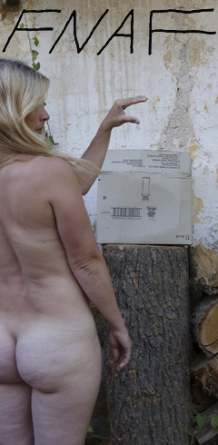






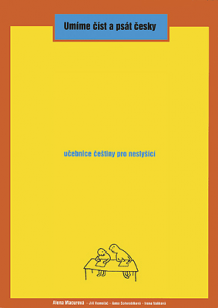




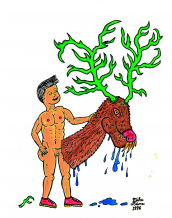
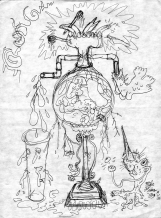

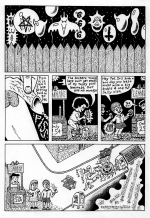


 We Are Rising National Gallery For You! Go to Kyjov by Krásná Lípa no.37.
We Are Rising National Gallery For You! Go to Kyjov by Krásná Lípa no.37.
Комментарии
Статья не была прокомментированаДобавить новый комментарий